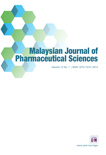| Published by Penerbit Universiti Sains Malaysia |
|
| :: Guidelines for Authors |
|
Please follow these instructions carefully. This would ensure that the review and publication of your paper are as swift and efficient as possible. USM Press reserves the right to reject or return manuscripts that are not prepared in accordance with these instructions, or with linguistic or scientific deficiencies. For further formatting and referencing aid, please consult The Harvard System of Referencing Guide.
This Journal provides immediate open access to its content on the principle that making research freely available to the public supports a greater global exchange of knowledge. All articles in the Journal are published open access under a Creative Commons Attribution license (CC BY 4.0). Authors transfer the copyright to Penerbit Universiti Sains Malaysia. This copyright transfer enables the Journal to protect the copyrighted material for the authors but does not relinquish the authors’ proprietary rights. The copyright transfer covers the exclusive rights to reproduce and distribute the article, including reprints, photographic reproductions, microfilm or any other reproductions of similar nature and translations. Authors are responsible for obtaining from the copyright holder permission to reproduce any materials for which copyright exists. The works are released under a Creative Commons license (CC BY 4.0), which provides unrestricted use, distribution, and reproduction in any medium provided the original work is properly cited. Users have the right to read, download, copy, distribute, print, search, or link to the full texts of articles in this Journal and to use them for any other lawful purpose. Open Access Policy Malaysian Journal of Pharmaceutical Sciences published by Penerbit Universiti Sains Malaysia is an open access journal. All articles are published under the terms of the Creative Commons Attribution License (CC-BY). All articles are freely available to read, share and download. In accordance with publication ethics and best practices of scholarly publishing, authors and journals must be properly credited. All articles are accessible via the Journal's website and selected indexing and abstracting databases. Publication Charges There are no submission charges or article processing charges (APC). Language Policy The journal accepts manuscripts written in English only. Peer-Review This Journal practices a double-blind peer review policy. The Editorial Board may exercise their prerogative to reject a manuscript without peer review if that article is judged to be outside the scope of the Journal, poorly written or formatted or lacking in significance. Original articles are original research work/studies that are previously unpublished. Short communications: report work that are preliminary in nature but merits immediate publication. Small-scale clinical studies, pilot studies as well as negative results would be considered for short communication articles. The format requirements are as full papers but are only up to 5 pages in length, of usually up to 1500 words with a total number of Figures plus Tables of not more than 5. Short communication articles should have no more than 20 references. Review articles: Comprehensive, authoritative description of the subject matter within the scope of the Journal. Manuscripts submitted for publication must be original, previously unpublished (except in the form of an abstract or as part of a published lecture or academic thesis), and not under consideration for publication elsewhere. Its publication must be approved by all Authors and tacitly or explicitly by the responsible authorities where the work was carried out, and that, if accepted, it will not be published elsewhere in the same form, in English or in any other language, without the written consent of the publisher, Penerbit Universiti Sains Malaysia (PUSM). If excerpts from other copyrighted works are included, the Author(s) must obtain written permission from the copyright owners and credit the source(s) in the article. Authors are responsible for requesting permission to use material (e.g. figures) that has been previously published and is under copyright; permission forms should be included with the manuscript. Papers accepted become the copyright of MJPS. This journal is indexed in MyAIS and DOAJ. Online Submission Download the Guidelines for Authors here [Download PDF]. Please read the guidelines for details of instruction on preparing the manuscript for submission. All contributors are requested to submit their manuscript(s) through online submission portal at http://mc.manuscriptcentral.com/mjps |


